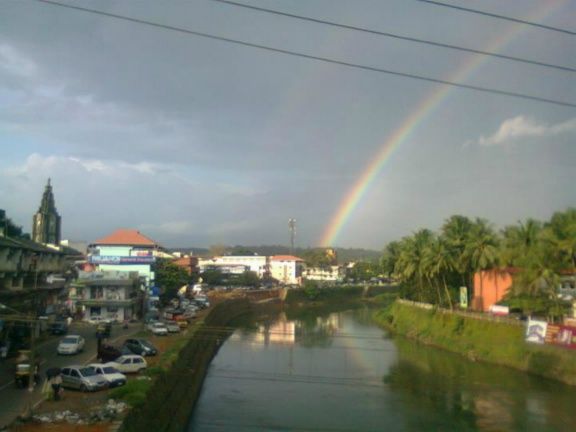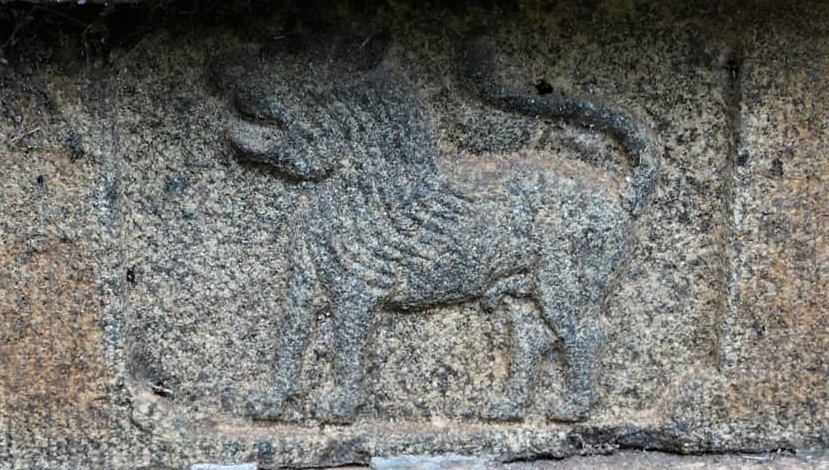|
G. V. Raja
Lt. Col. P. R. Godavarma Raja (13 October 1908 – 30 April 1971), often referred to as G. V. Raja, was an Indian sports and tourism promoter and administrator, pilot, sportsman and Sanskrit scholar . He took special care in inspiring the youth into sports and was instrumental in founding the Kerala Sports Council in 1953. G. V. Raja occupied the post of Council President till he was killed in a flight mishap in 1971. G. V. Raja also played a key role in establishing the Thiruvananthapuram Tennis Club, Flying Club, and the development of the Thiruvananthapuram International Airport. As the spouse of Karthika Thirunal Lakshmi Bayi, he became the prince consort of Travancore. G. V. Raja was the founder President of the Kerala State Sports Council as well as Kerala Cricket Association, and patron of a large number of sports clubs and associations. The CricInfo website reports that Raja was the first Keralite to become the Vice-President of Board of Control for Cricket in India, and ... [...More Info...] [...Related Items...] OR: [Wikipedia] [Google] [Baidu] |
Poonjar Dynasty
Poonjar dynasty (Malayalam:പൂഞ്ഞാർ രാജവംശം) was one of the royal dynasties in medieval Kerala descended from the Pandya kings of Madurai. History has it that Manavikrama Kulasekara Perumal, a Pandya king as the sole founder of the dynasty. It was a minor principality in the central Travancore region which covered the parts of present-day Dindigul, Cumbum, Kudallor, Bodinayakkanur, Vandiperiyar, Peerumedu and Kannan Devan hills. Manavikrama Kulasekara Perumal In , Kulothunga Chola, a famed Chola king entered in a battle with Manavikrama Kulasekara Perumal, who was a Pandya king. Kulothunga's first attempt to defeat him went unsuccessful but, his next attempt became successful which resulted in the failure of Manavikrama. Upon the failure, Manavikrama appointed his brother Maravarman Sreebhallava as the raja of Pandya kingdom and left Madurai with his family and some trusted servants. Later, he settled in Gudalloor region with his family and administe ... [...More Info...] [...Related Items...] OR: [Wikipedia] [Google] [Baidu] |
Board Of Control For Cricket In India
The Board of Control for Cricket in India (BCCI) is the national governing body for cricket in India. Its headquarters are situated at Cricket centre, Wankhede Stadium in Mumbai. The BCCI is the richest governing body of cricket in the world and is part of the ''Big Three'' of international cricket, along with Cricket Australia and the England and Wales Cricket Board. The board was formed in and is a consortium of List of members of the Board of Control for Cricket in India, state cricket associations. The state associations select their own representatives who in turn elect the BCCI president. R. E. Grant Govan, Grant Govan was the first BCCI president and Anthony De Mello was its first secretary. It joined the International Cricket Council, Imperial Cricket Conference in the year 1926. The BCCI is an autonomous, private organisation and does not fall under the purview of the National Sports Federation of India. The government of India has minimal regulation on BCCI. As such ... [...More Info...] [...Related Items...] OR: [Wikipedia] [Google] [Baidu] |
Meenachil River
The Meenachil River or Meenachilaar (Malayalam: ), also known as Kavanar, Valanjar, is a river in Kerala. It is one of the most treacherous rivers in Kerala due to its flash floods, heavy undercurrents and woods and debris it carries from the mountains. It flows through the heart of Kottayam district, Kerala state in southern India. 78km long, originates in the Western Ghats main tributaries are Theekoy aaru from Vagamon hills, Poonjar Aaru and Chittar, flowing westward through the city of Kottayam and other towns like Poonjar, Teekoy, Erattupetta, Bharananganam, Pala, Mutholy, Cherpunkal, Kidangoor and Kumarakom before emptying into the Vembanad Lake on the shore of the Indian Ocean. General elevation ranges from 77 m to 1156 m in the highlands and less than 2 m in the lowlands and 8 to 68 m in the midlands. The Meenachil has a watershed area of 1208.11 km². The river has a total annual yield of 2,349 million cubic metre and an annual utilizable yield of 1110 ... [...More Info...] [...Related Items...] OR: [Wikipedia] [Google] [Baidu] |
Meenakshi Temple
Arulmigu Meenakshi Sundaraswarar Temple is a historic Hindu temple located on the southern bank of the Vaigai River in the temple city of Madurai, Tamil Nadu, India. It is dedicated to the goddess Meenakshi, a form of Parvati, and her consort, ''Sundareshwarar'', a form of Shiva. The temple is at the center of the ancient temple city of Madurai mentioned in the Tamil Sangam literature, with the goddess temple mentioned in 6th-century-CE texts. This temple is one of the Paadal Petra Sthalams. The Paadal Petra sthalams are 275 temples of lord Shiva that are revered in the verses of Tamil Saiva Nayanars of 6th-9th century CE. The west tower (gopuram) of the temple is the model based on which the Tamil Nadu State Emblem is designed. Overview Madurai Meenakshi Sundareswarar temple was built by Pandayan Emperor Sadayavarman Kulasekaran I (1190 CE–1205 CE). He built the main Portions of the three-storeyed Gopuram at the entrance of Sundareswarar Shrine and the central portion of t ... [...More Info...] [...Related Items...] OR: [Wikipedia] [Google] [Baidu] |
Meenakshi
Meenakshi (Sanskrit: ; Tamil: ; sometimes spelled as Minakshi; also known as , and ), is a Hindu goddess and tutelary deity of Madurai who is considered an avatar of the Goddess Parvati also referred to as Durga. She is the divine consort of Sundareswarar, a form of Shiva.Rajarajan , R.K.K. 2005. Minaksi or Sundaresvara: Who is the first principle? ''South Indian History Congress Annual Proceedings'' XXV, Madurai Kamaraj University, Madurai, pp. 551-553. She finds mention in literatures as the or of the ancient Madurai based [...More Info...] [...Related Items...] OR: [Wikipedia] [Google] [Baidu] |
Thekkumkur
The Kingdom of Thekkumkur ( ml, തെക്കുംകൂർ രാജ്യം) (also transliterated as ''Thekkumkoor'' or ''Thekkumcore'') was an independent kingdom in the southern part of Kerala in India from 1103 CE until 1750 CE.P. Shungoonny Menon - A HISTORY OF TRAVANCORE - First edition: 1878, New edition: 1983, Page 130, 131 - It was ruled by the Thekkumkur Royal Family (Edathil Family). Thekkumkur lies between the Meenachil River and the Pamba River, from the Western Ghats to the Vembanad Kayal. Thekkumkur emerges as a result of administrative changes in the princely states at the end of the Chera Kulasekhara dynasty of Mahodayapuram. The literal meaning of the title is ''the southern regent'' and the attribute ''southern'' distinguished them from another kingdom known as ''Vadakkumkur (northern regent)'' which bordered it in the northern side. The royal household, ''Thekkumkur Kovilakam'', were at Vennimala and Manikandapuram near Puthuppally, later it shifted ... [...More Info...] [...Related Items...] OR: [Wikipedia] [Google] [Baidu] |
Madurai
Madurai ( , also , ) is a major city in the Indian state of Tamil Nadu. It is the cultural capital of Tamil Nadu and the administrative headquarters of Madurai District. As of the 2011 census, it was the third largest Urban agglomeration in Tamil Nadu after Chennai and Coimbatore and the 44th most populated city in India. Located on the banks of River Vaigai, Madurai has been a major settlement for two millennia and has a documented history of more than 2500 years. It is often referred to as "Thoonga Nagaram", meaning "the city that never sleeps". Madurai is closely associated with the Tamil language. The third Tamil Sangam, a major congregation of Tamil scholars said to have been held in the city. The recorded history of the city goes back to the 3rd century BCE, being mentioned by Megasthenes, the Greek ambassador to the Maurya empire, and Kautilya, a minister of the Mauryan emperor Chandragupta Maurya. Signs of human settlements and Roman trade links dating back to 3 ... [...More Info...] [...Related Items...] OR: [Wikipedia] [Google] [Baidu] |
Sangam Age
The Sangam period or age (, ), particularly referring to the third Sangam period, is the period of the history of ancient Tamil Nadu, Kerala and parts of Sri Lanka (then known as Tamilakam) spanning from c. 6th century BCE to c. 3rd century CE. It was named after the famous Sangam academies of poets and scholars centered in the city of Madurai. The First Sangam to be located in ''Then Madurai'' under the patronage of 89 Pandya kings, during this period. It is said to have lasted for 4,440 years, and this would put the First Sangam between 9600 BCE to 5200 BCE. In Old Tamil language, the term Tamilakam (''Tamiḻakam'', ''Purananuru'' 168. 18) referred to the whole of the ancient Tamil-speaking area, corresponding roughly to the area known as southern India today, consisting of the territories of the present-day Indian states of Tamil Nadu, Kerala, parts of Andhra Pradesh, parts of Karnataka and northern Sri Lanka also known as Eelam. History According to Tamil legends, th ... [...More Info...] [...Related Items...] OR: [Wikipedia] [Google] [Baidu] |
Marumakkathayam
Marumakkathayam was a system of matrilineal inheritance prevalent in regions what now form part of the southern Indian state Kerala. Descent and the inheritance of property was traced through females. It was followed by all Nair castes, Ambalavasi and tribal groups. The elder male was considered the head known as karanavar and the entire assets of the family were controlled by him as if he was the sole owner. The properties were not handed to his sons but to the daughters of his sons or to their sisters. The word literally means inheritance by sisters' children, as opposed to sons and daughters. 'Marumakkal', in the Malayalam language, means nephews and nieces. The joint family under the matrilineal system is known as Tharavad and formed the nucleus of the society in Malabar. The customary law of inheritance was codified by the Madras Marumakkathayam Act 1932, Madras Act No. 22 of 1933, published in the ''Fort St. George Gazette'' on 1 August 1933. Malabar was part of the M ... [...More Info...] [...Related Items...] OR: [Wikipedia] [Google] [Baidu] |
Sambandam
Sambandham was an informal mode of marriage followed by Nairs, Samantha Kshatriyas, Kshatriyas, and Ambalavasis among their own communities as well as with the Nambudiris, in what is the present day state of Kerala, India. All of these were matrilineal communities. Sambandham also denoted reciprocal marriage among Nairs and this term was not just used to denote hypergamous marriages between the Nambudiris and the Nairs. The custom is no longer observed. Alternate names for the system were used by different social groups and in different regions; they included ''Pudavamuri'', ''Pudavakoda'', ''Vastradanam'', ''Vitaram Kayaruka'', ''Mangalam'' and ''Uzhamporukkuka''. Practice Among Nairs The Nair women were allowed to take a number of husbands, the number could be of dozens but usually there were three or four regular sambandam husbands. The Nair women also had temporary relationships with the Nair soldiers passing through the area. There were no resentment among the Samban ... [...More Info...] [...Related Items...] OR: [Wikipedia] [Google] [Baidu] |
Poonjar
Poonjar is a small Indian town located on the eastern side of Kottayam district in Kerala state, India. Before the independence of India, Poonjar had been the part of Travancore princely state.Erattupetta, Teekoy, bharananganam, and vagamon are the nearest towns and villages of Poonjar.Taluk headquarters,pala is 18 kilometres away from poonjar and kanjirapally is 22.6 kilometres away from poonjar History Poonjar is a place of historic importance, situated on the north-eastern part of Kottayam district. Poonjar, a town at the foothills of Western Ghats, was the capital of Poonjar Kingdom. Poonjar dynasty The Poonjar dynasty originated from the Pandyan Kings of the Sangam Age. The founder of the dynasty, Manavikrama Kulashekhara Perumal, was a Pandyan king whose mother was a Chera princess. In 1152 AD, he shifted from Madurai due to the incessant civil wars in Tamil Country. The Raja carried one of the three idols of Meenakshi, their "Kula Devatha", which was used in the annual ... [...More Info...] [...Related Items...] OR: [Wikipedia] [Google] [Baidu] |






